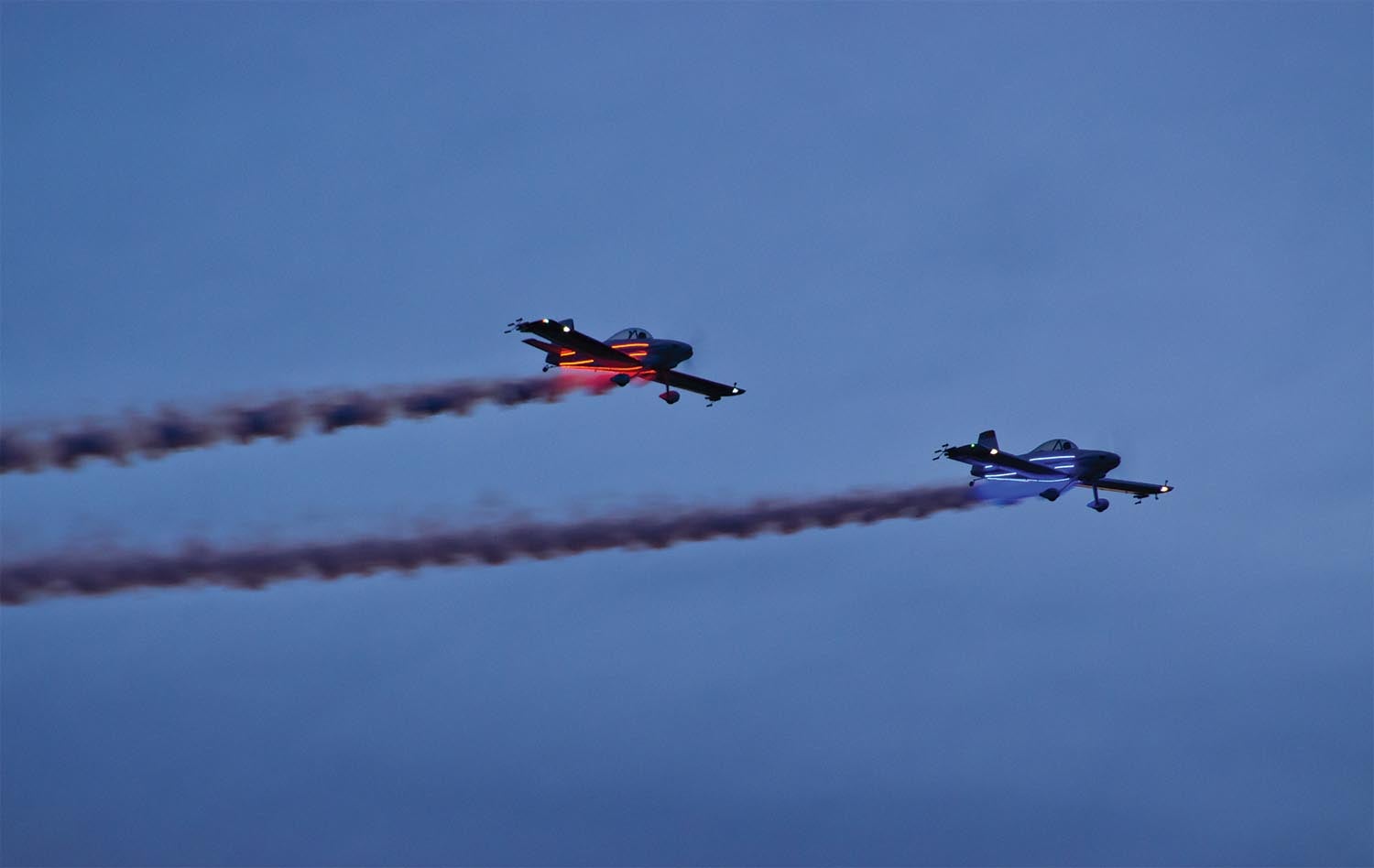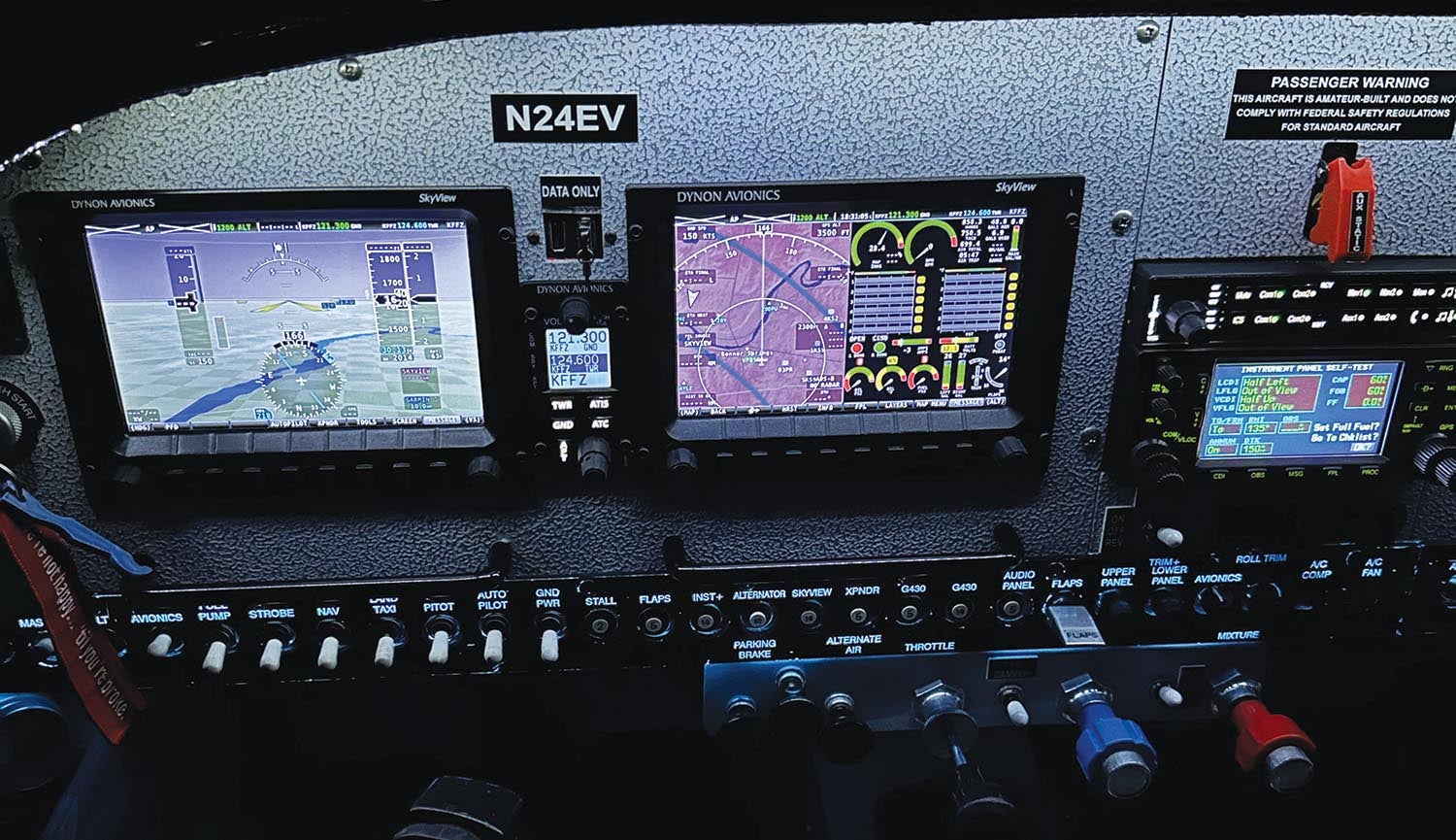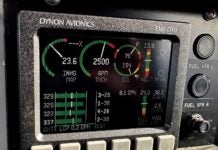
The theme of this month’s treatise is centered on flight operations at night. But I specifically chose the title because “Night Flight” happens to be one of my favorite Led Zeppelin songs and it popped up on my rotation just as I was sitting down to write.
During my career, I was fortunate in that my airline produced its pilot schedules primarily as “a.m.” or “p.m.” duty days. As soon as my seniority juice could manage it, I religiously bid “p.m.” shifts. They just worked better with my body clock and my innate distaste for alarm clocks. I also simply enjoy flying at night.
Obviously flying at night comes with its own challenges and risks, especially in general aviation where the equipment and capabilities aren’t the same as in the airline world. With proper preparation and execution, flying at night can be as safe as flying in daylight. We know that risk factors compound. Under the right circumstances, I will fly IMC, over mountainous terrain or at night. I personally choose to not fly all three at once and am quite selective on combining even two.
Building for Night Flight
Unless your aim is to build as light and simple as possible—perhaps to suit your taste or a specific mission for the aircraft—it makes little sense to not equip for flying at night. That is true even if the builder has no intention of ever flying at night. The required equipment for night flight (outlined below) makes even daylight flying safer and adds value to the airplane.
The specific requirements for equipping an aircraft for night operations are found in FAR 91.205. In addition to the VFR requirements, night ops require anti-collision lights—strobes or a rotating beacon—plus position or navigation lights and landing light(s). A FAR note regarding landing lights specifically says “when used for hire,” but I think landing lights should be on the must-have list. Since the language in the FAR was first written, landing lights have taken on a more prominent role in see-and-avoid procedures day or night. Additional requirements include spare fuses if applicable and obviously a source of power for everything required.
Additional recommendations for builders include proper panel illumination and some convenience items like dome/reading and cargo area lights. I use an Aveo EyeBeam red/white LED light mounted in the overhead console for the dome light—it can serve as backup panel illumination—and a battery-powered portable light for the cargo area. Both have served fine. After suffering an alternator failure on the way to AirVenture a couple of years ago, I subsequently installed a backup alternator and have enjoyed the added security of its presence, especially at night.
One last recommendation for builders is to always run spare wires to the wingtips and tail that are marked at both ends and to consider leaving space in the switch rack or circuit breaker field for future use. I have already used some of mine doing upgrades and, quite frankly, wish I had more available.

Preparing for Night Flight
While flying at night can be safe and enjoyable, there’s a reason that some countries require an IFR clearance after dark. All flights should be carefully planned but night flights require a deeper look into terrain, weather, fuel, NOTAMs and so on. Airports visited for the first time can sometimes be easier to see in the distance at night but you need to know key things about them, such as operating hours of the tower and procedures to manually operate their lights, among other things. Night flight has inherently higher fuel-reserve requirements and there is wisdom in bumping up personal minimums even higher.
Preflighting the aircraft requires extra attention. Sometimes it makes sense to preflight earlier in the day or in a well-lighted hangar. Personal flashlights are a go/no-go item for night flying. In addition to the long federal standard “two D-cell or equivalent” flashlight I keep in the flight bag, I have grown fond of simple shirt-pocket penlights. My kids recently gave me a cap that has LED lights in the brim and that has proven to be very handy for two-handed operations like checking oil quantity. Sometimes you need a lot of light and sometimes just a little is perfect.
Personal preparation is important as well. For those used to dinner at four and bed by eight, a late-night flight may not be wise without a body clock adjustment period for a few days prior. Night vision is also an important consideration. Spare glasses are wise and since night vision is more susceptible to oxygen degradation, carrying oxygen equipment becomes more important.
One more note about personal preparation. Those who use Sildenafil (the generic form of Viagra) should be aware of an important side effect. Some airports use blue sideline lights for taxiways and others use green centerline lights. Some use a combination of both. A sometimes long-lasting side effect of Viagra use (so I’ve read), is a deterioration in the human eye’s capability to distinguish between green and blue. I will never forget taxiing late one night in Las Vegas when a heavy up ahead was following a sideline instead of the centerline. Fortunately for them, the ramp area was wide with parallel taxiways and the lights were flush mounted. After ground control admonished the heavy to correct its taxi line position, some miscreant jumped onto the frequency and said “It must be the Viagra!” causing howls of laughter from those of us on the frequency but no reply from the heavy as it quickly realigned its track.
Flying Night Flights
The first step in flying at night is being legal and current. FAR 61.57 outlines the currency requirements for carrying passengers: at least three takeoffs and landings to a full stop between one hour after sunset to one hour before sunrise. Needless to say, these events require precise logbook documentation, maintained as if a Fed or an insurance adjuster will be examining them. Minimums are just minimums and more experience is always better. One recommendation for potential night flyers is to get some refresher hood time with a safety pilot or flight instructor.
Flying at night can inherently push a pilot more toward the outer boundaries of the safety envelope and simply requires proactive efforts to compensate. Flying at night usually makes spotting other aircraft and certain navigation landmarks easier. Flying on a clear night with a full moon can bring visibility to near-daylight standards. But flying under an overcast or with little to no celestial light can drop prevailing visibility to IFR standards, especially over barren terrain. This adds emphasis once again to expanded currency, weather planning and in-flight monitoring.
It is often appropriate when flying cross-country at night to choose higher cruise altitudes than might normally be selected to give more cushion and options. However, higher altitudes bring added caution for hypoxia concerns and night vision degradations, making using oxygen earlier and longer often appropriate.
Another consideration in certain areas, especially mountainous, is to avoid the temptation of flying direct. Instead, choose an old-school airway routing that in addition to charted safe altitude support may also keep the aircraft closer to alternate en route airports in case of emergency. The extra time and fuel burn are usually not that significant compared to extra peace of mind. I am also an advocate of using flight following on every cross-country flight but believe it is even more important at night to further expand the safety envelope.
A good habit when approaching an airport with pilot-controlled lighting is to activate the lighting a second time close to the runway so that the timer doesn’t expire at the worst possible time. Another best practice when in a night landing flare is to focus primarily on the far end of the runway with the edge lights in your peripheral vision instead of looking down at the runway right in front of the nose. As always, if an approach or landing isn’t coming together, go around and try again. Also, because ground operations can be confusing at night, even at familiar airports, the use of geo-referenced airport diagrams for taxiing is highly recommended.

Buttons on Boxes
The modern EFIS commonplace in today’s Experimental aircraft provides many safety enhancements day and night over their “steam” forebears. Weather, moving maps, terrain awareness and synthetic vision can all be lifesavers, especially at night, as long as they aren’t providing false courage to foolish aviators biting off more than they can (or should) chew. Baby steps, young Padawan.
It can be beneficial to use today’s sophisticated autopilots more often at night as long as they aren’t used as a crutch that promotes inattentiveness. Most modern autopilots have at least a wing leveler function, if not a full-on panic button to reset an aircraft in an unusual attitude emergency. Being able to quickly and appropriately use that functionality is essential.
I sincerely hope that my cautionary tales about flying at night don’t dissuade some from enjoying some of the most rewarding flying there is and the increased flexibility of their aircraft that an expanded timetable brings. The night airshows at AirVenture are spectacular. Flying at night is fun, but like any other aeronautical activity, must be taken seriously and prepared for thoroughly.














Aren’t the wind conditions more gentle at night?
It depends. Routine diurnal winds do usually peak in the afternoons and fade after sunset. However, winds related to convective activity and/or frontal activity can be just as fierce anytime. Upper winds aloft related to jet stream activity are generally stronger in winter than summer.